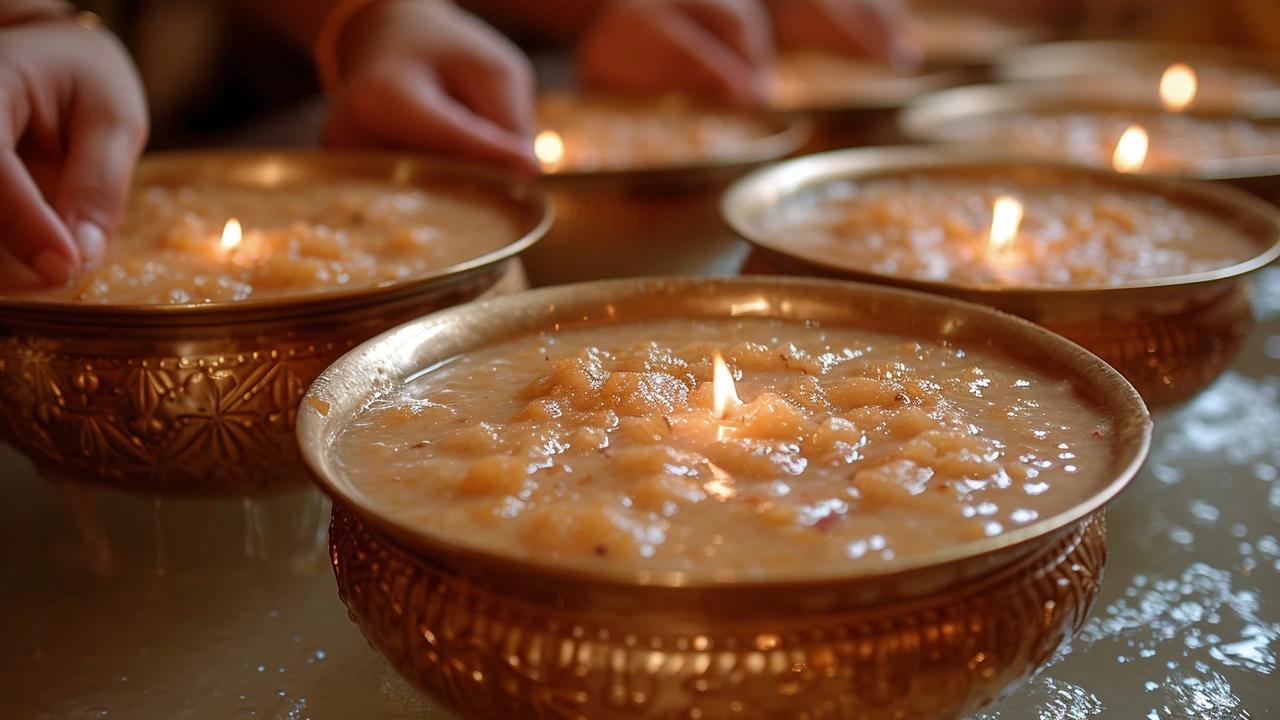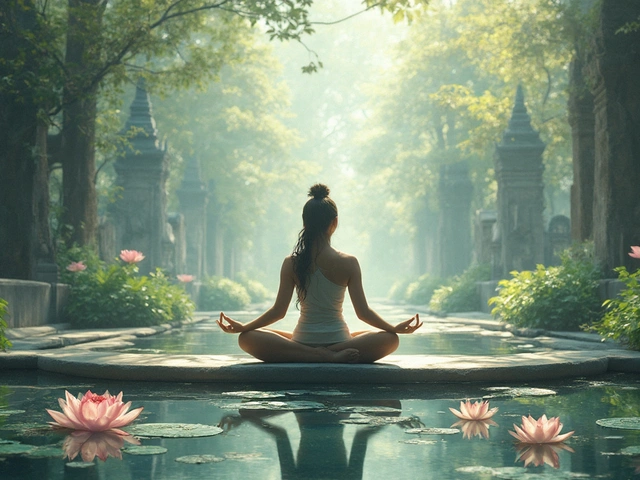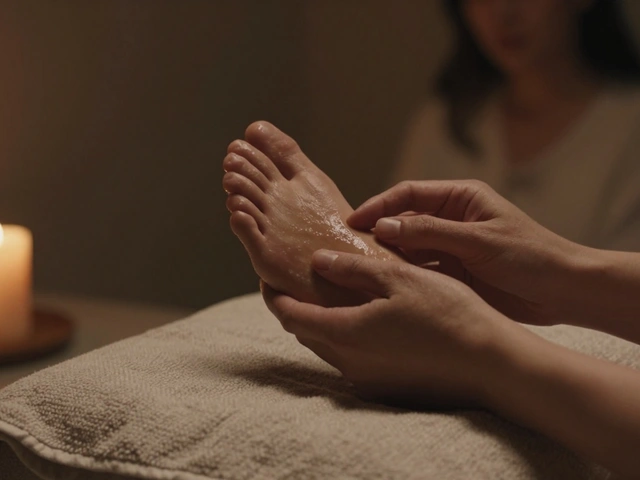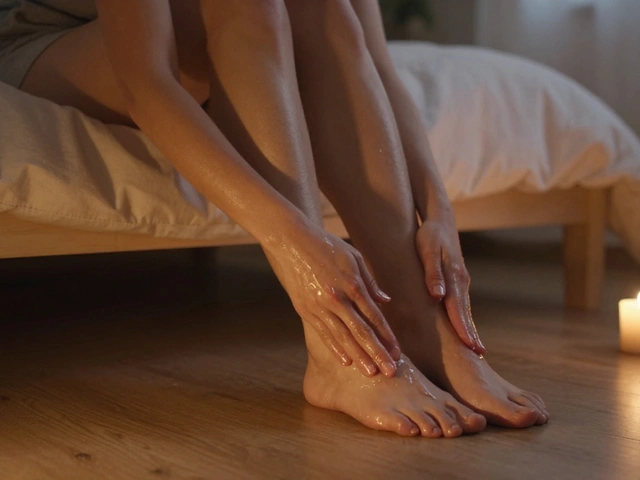Introduction to Abhyanga: Unlocking Ancient Wellness
Imagine starting or ending your day immersed in a practice so nurturing and revitalizing that it touches not just the body, but also the soul. That's the essence of Abhyanga, a cornerstone of Ayurvedic medicine. This ancient practice of self-massage with oil, steeped in tradition, is more than just a physical act of applying oil; it's a holistic ritual that promotes balance, wellness, and a profound connection with oneself. Ayurveda, a 5000-year-old system of natural healing that originated in the Vedic culture of India, emphasizes the importance of balance and harmony in health. Abhyanga, as a part of this holistic system, is valued for its ability to improve circulation, nourish the skin, and calm the mind.
The practice involves massaging the body with warm oil, chosen according to one's Dosha or constitution—Vata, Pitta, or Kapha. Each oil has specific properties that align with or counteract the traits of these Doshas, making the treatment highly personalized. But the benefits of Abhyanga extend beyond the physical. Regular practice can lead to improved sleep, enhanced flexibility, and a deeper sense of spiritual well-being. As we dive into the world of Abhyanga, we unveil a transformative ritual that has stood the test of time, offering a natural path to balance and rejuvenation.
Benefits of Abhyanga: A Holistic Approach to Wellness
Delving into the benefits of Abhyanga, it's clear that this practice is more than skin deep. The immediate tangible effect of nourished, glowing skin barely scratches the surface of its profound impact. Physiologically, Abhyanga enhances blood circulation, promoting the efficient delivery of nutrients and oxygen to cells, and facilitating the removal of toxins. This improvement in circulation also bolsters the body's natural defenses, strengthening the immune system. Furthermore, the act of massaging the body with warm oil soothes the nervous system, reducing stress and anxiety levels. This, in turn, can lead to better sleep quality and a more relaxed state of mind.
On a subtler level, Abhyanga aligns with the Ayurvedic principle that routine and self-care are fundamental to health and wellbeing. The ritualistic nature of the massage fosters a routine, encouraging consistency in self-care practices. This regular attention to the body and mind nurtures a heightened sense of self-awareness and self-love, contributing to an overall sense of wellbeing. The practice also supports the body's lymphatic system, crucial for immune health, by stimulating the flow of lymph fluid and aiding in detoxification. Let's not forget the flexibility and vitality that come with regular practice, making Abhyanga a cornerstone for a balanced, healthy lifestyle.
Choosing the Right Oil: Tailoring Abhyanga to Your Needs
Selecting the appropriate oil is a critical step in adapting Abhyanga to suit individual needs. Each oil possesses unique properties that can be matched to a person's Dosha or specific health concerns. For Vata types, prone to dry skin and coldness, sesame oil, rich and warming, is ideal. Pitta types, with their fiery nature, benefit from the cooling properties of coconut or sunflower oil. Kapha individuals, characterized by their earthy and robust constitution, find olive or mustard oils invigorating. Moreover, the oils can be infused with herbs or essential oils to enhance their therapeutic attributes, addressing specific ailments or promoting relaxation.
Understanding one's Dosha and the qualities of different oils enables a personalized Abhyanga experience. This tailored approach ensures that the practice not only provides physical nourishment but also aligns with one's energetic and emotional needs. It's a process of trial and error, experimenting with different oils and observing the body's response. The goal is not just to perform a routine massage but to engage in a deeply personal ritual that resonates on every level of being. From the warmth of the oil to its aroma and the soothing touch, every aspect of Abhyanga can be customized to form a cornerstone of one's self-care practice.
Preparing for Your Abhyanga: Setting the Stage for Relaxation
Creating the right environment and preparing oneself for Abhyanga amplifies its benefits. The setting should be warm and inviting, promoting a sense of calm and relaxation. This can include a comfortable room temperature, dim lighting, and perhaps some gentle, soothing music. The oil should be warmed to a pleasant temperature, either by placing the bottle in hot water or using a specific oil warmer. Before beginning the massage, take a moment to center oneself, focusing on the intention behind the practice. Whether it's to relax, rejuvenate, or simply to provide self-care, this mindful approach enhances the experience.
It's also advisable to have a dedicated space where the massage can be performed without interruption. A comfortable mat or towel to sit or lie on, and perhaps a small stool or chair, can make the experience more enjoyable. The process of Abhyanga can be meditative, a time to connect with oneself on a deeper level. By eliminating distractions and creating a serene atmosphere, the massage becomes not just a physical action, but a sacred ritual, a time to honor the body and nourish the soul. This preparation, both physical and mental, sets the stage for a truly transformative experience.
Step-by-Step Guide to Performing Abhyanga
The actual process of performing Abhyanga is straightforward yet deeply impactful. Start by warming the oil to a comfortable temperature. Apply the oil generously to the crown of the head, using gentle circular motions to massage the scalp. This area is considered a major marma point or energy center in Ayurveda, and massaging it can have a calming effect on the entire nervous system. From the head, move to the face and ears, applying oil with gentler strokes. The face, with its numerous marma points, can benefit significantly from this attention, helping to release tension and promote relaxation.
Next, move to the arms, applying long strokes on the limbs and circular motions around the joints. This technique helps to balance the flow of energy, supporting the body's circulatory and lymphatic systems. The chest and abdomen should be massaged gently using clockwise motions, following the path of the digestive system to aid in digestion and detoxification. The back, legs, and feet follow, with special attention given to the soles of the feet, another vital marma point. This comprehensive approach ensures that no part of the body is neglected, promoting a holistic sense of wellness and vitality.
The massage should be performed with a blend of mindfulness and intention, focusing on the sensations and the connection to one's body. It's a time to listen to the body's needs, applying pressure and attention where it feels most necessary. The process can take anywhere from 15 to 30 minutes, depending on one's schedule and preferences. Following the massage, it's beneficial to rest for a few minutes, allowing the body to absorb the oil and the mind to savor the tranquility. A warm bath or shower can complete the ritual, cleansing the body and leaving the skin soft and rejuvenated.
Integrating Abhyanga into Your Daily Routine
Making Abhyanga a part of your daily routine can transform it from a mere practice into a cherished ritual, a cornerstone of a holistic approach to health and wellness. The key is consistency and adaptability. While daily practice is ideal, even incorporating it two to three times a week can have significant benefits. It's about finding a rhythm that works for you and your lifestyle, whether it's in the morning to invigorate and prepare for the day or in the evening to unwind and promote restful sleep.
The beauty of Abhyanga lies in its flexibility. It can be adapted to fit into busy schedules, shortened when time is tight or extended for those days when a deeper connection and relaxation are needed. The practice becomes not just a routine but a sacred time dedicated to self-care and mindfulness. Over time, Abhyanga can lead to a deeper connection with oneself, enhancing self-awareness and promoting a balanced, healthy life. It's an invitation to slow down, to care for the body and mind, and to embrace the ancient wisdom of Ayurveda in daily life.
Conclusion: Embracing the Ancient Wisdom of Abhyanga
Abhyanga, with its rich heritage and profound benefits, offers a timeless approach to wellness that is as relevant today as it was thousands of years ago. This guide has aimed to demystify the practice, making it accessible and adaptable to the modern world. Embracing Abhyanga as a regular part of self-care can lead to significant improvements in physical health, mental clarity, and emotional well-being. It's an act of self-love that nurtures the body, calms the mind, and connects us to the ancient wisdom of Ayurveda. As we incorporate this nurturing practice into our lives, we open the door to a more balanced, healthy, and harmonious existence.









